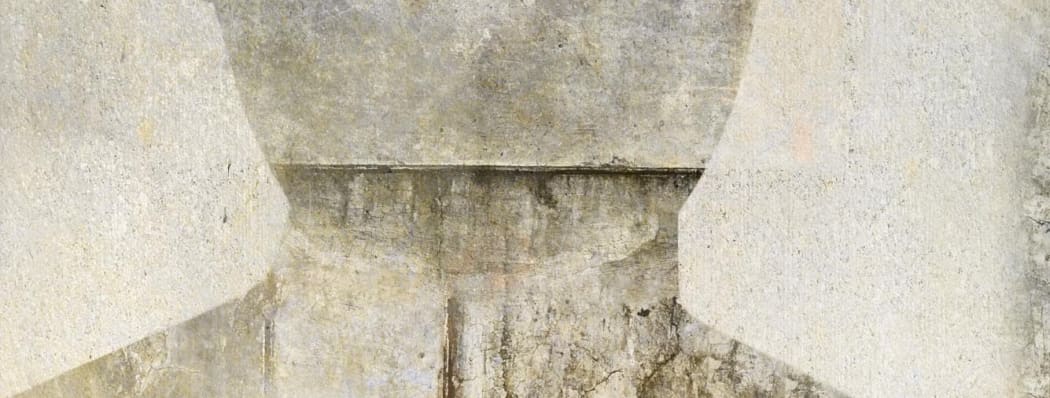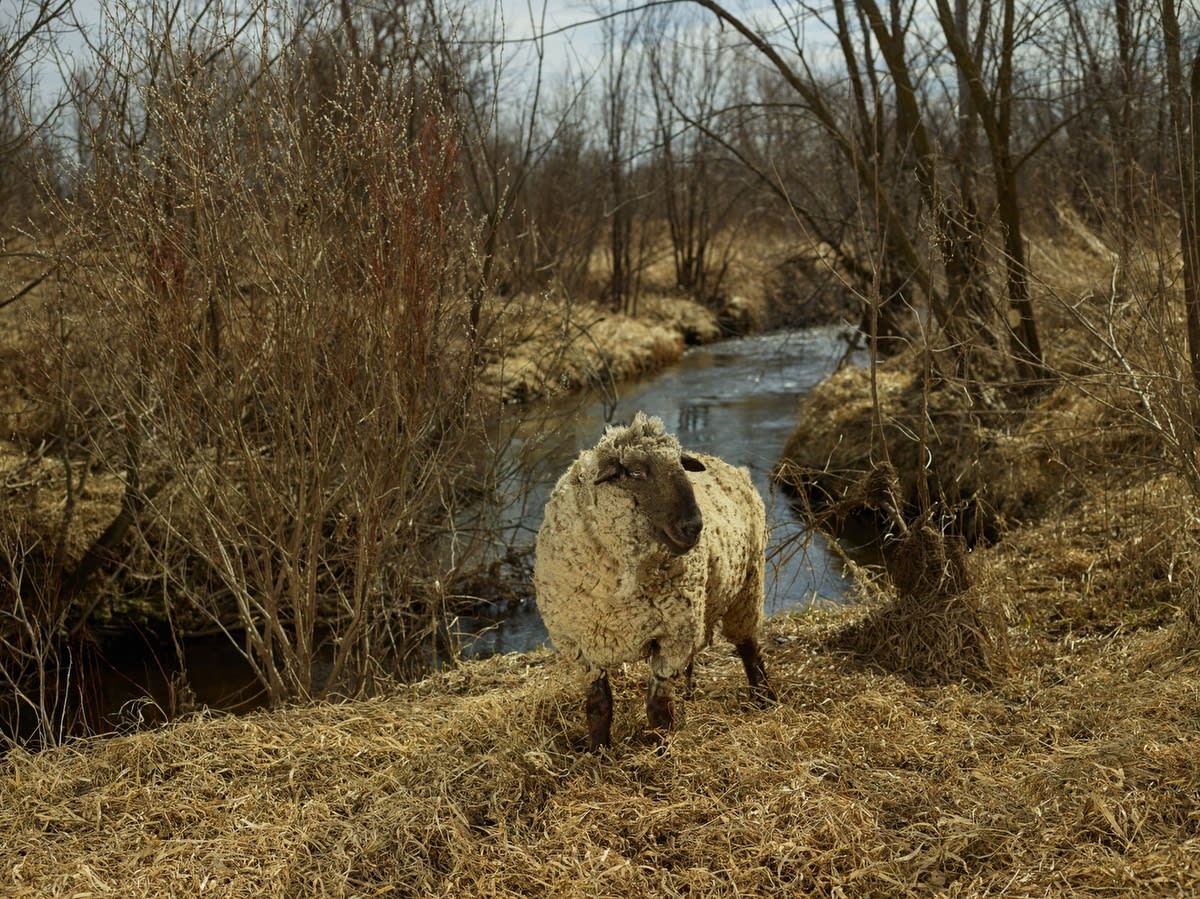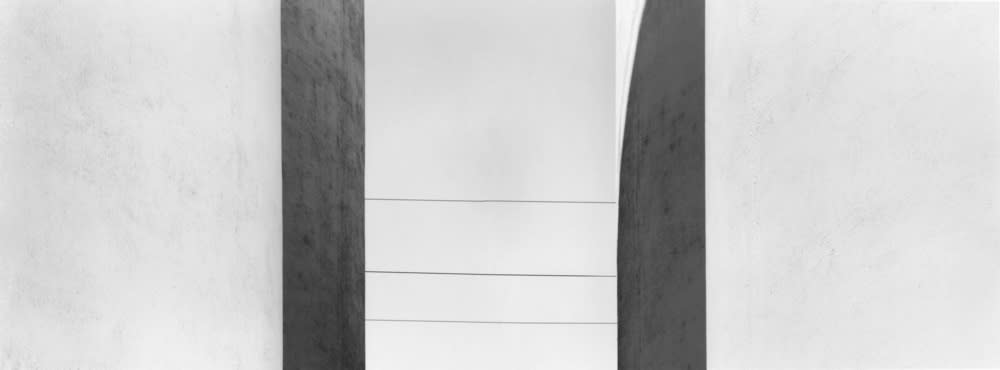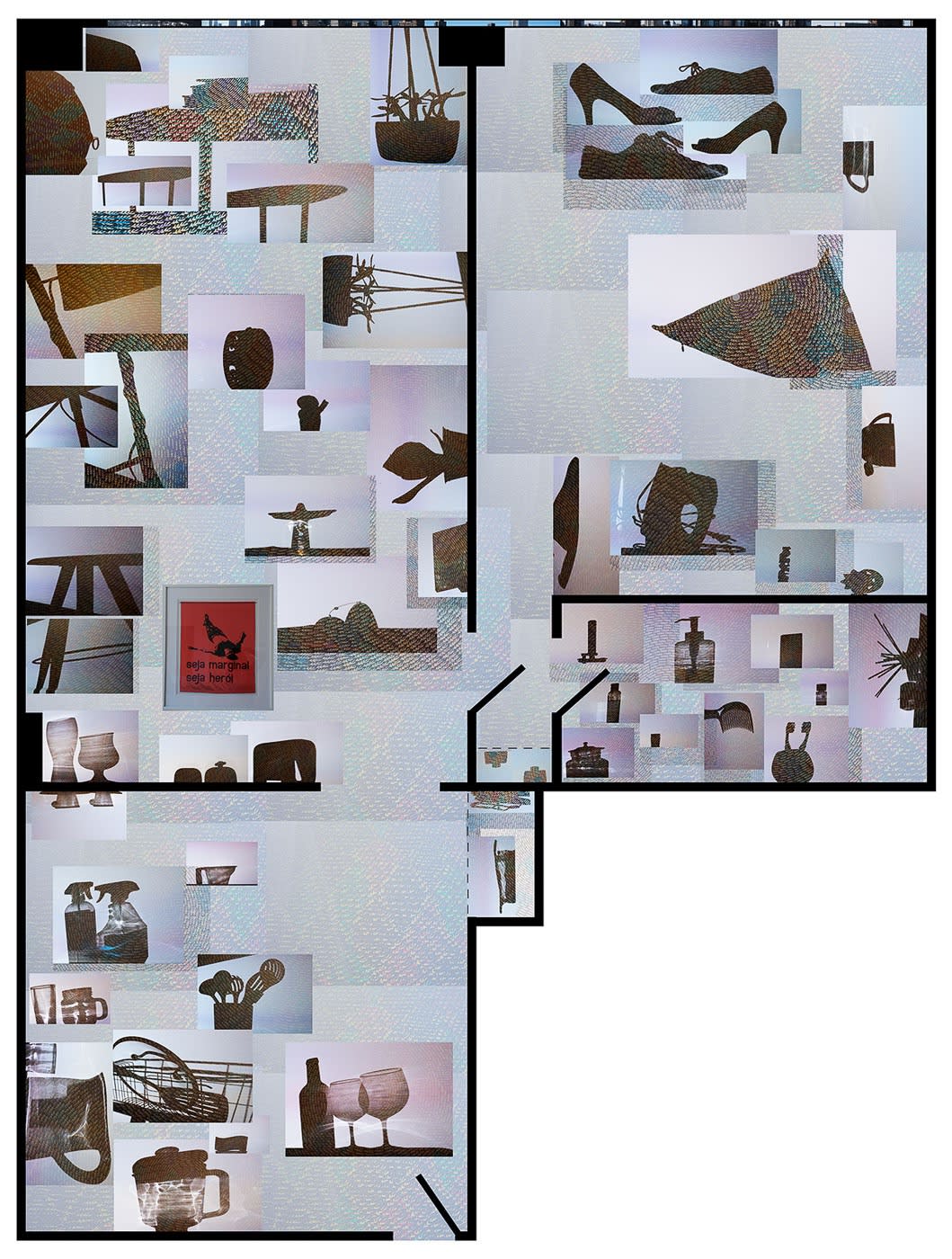
Last month at Photo Lucida in Portland, Oregon there were opportunities to make new photographic discoveries. Innovation in photography is evident in both traditional analog silver gelatin prints and digital archival-pigment prints. The old technologies coexist with the new. In each of the following situations, the photographer found the ordinary and made it special, in the spirit of Elliott Erwitt’s comment:
“To me, photography is an art of observation. It’s about finding something interesting in an ordinary place… I’ve found it has little to do with the things you see and everything to do with the way you see them.”
RJ Kern
RJ Kern (1) expressed the sentiments of many artists when he quoted Ralph Waldo Emerson: “Love of beauty is taste. Creation of beauty is art.”
Kern is a traditional photographer who has created images in the tradition of 19th Century painters and the Pictorialist movement. Many photographers take their inspiration from other media. Kern commented that he was inspired by the painters Albert Bierstadt and Thomas Sidney Cooper, among others. One can see these influences his images. Kern captures the landscape like a 19th century American painting. Bierstadt for the landscapes and Cooper for animals. In his portfolio “Out to Pasture” he captures “bovidae”, cloven-hoofed animals. “Out to Pasture” serves as a secondary, deeper glimpse of his series “The Unchosen Ones”, offering insight into the cultural landscape these animals call “home”. In “The Unchosen Ones”, Kern is focused on the young people and their animals which were not chosen at the Minnesota State Fair. He explores a concept personal to him: “One isn’t born a winner or loser, but a chooser.” In “Out to Pasture”, the images are about the animals in a natural setting. But, what sets these images apart are the masterful landscape settings. To achieve that, Kern shows a mastery of natural and artificial lighting. The lesson in his images is to reveal the details on the shadows. “…after studying old paintings …, subtle shadow details revealed what my camera couldn’t. There was something missing and I didn’t know how to put my finger on it. Painters, I guess, have it easier to create the light they desire. With a brush, they can create all the shadow detail they want, with desired contrast and tonality. … I attempt to bathe (the) subject in soft light to establish the minimum amount of shadow detail.” What is more notable is that he minimizes his use of digital tools like Photoshop, and relies, in the field, on both natural light and the use of artificial lights that he brings. One would expect that RW Emerson would be very pleased with the result.

The studio work from the series “Oggetti di Vetro” (2) of Robert Calafiore brings forward an older tradition in photography. He uses a hand-built pinhole camera to make one of a kind large “C-prints”. A “C-print” is a chromogenic color paper that is exposed to light and developed in the wet chemistry of traditional “analog” photography before the digital revolution/evolution. The term “C-print” itself is of interest as it is passing from the common lexicon of photographers whose only experience with image capture and reproduction is digital. “The first commercially available chromogenic print process was Kodacolor, introduced by Kodak in January 1942. Kodak introduced a chromogenic paper with the name Type-C in the 1950s, and then discontinued the name several years later. The terminology Type-C and C-print have remained in popular use since this time.” (3); It produces a very different image, both in appearance and texture, from a digital pigment print. Calafiore’s images are of elegant and somewhat elaborate glass vases and the like he has found. The colors radiate from both the glass and the studio lighting he uses. The uniqueness of the images result not only from the physical characteristics of the chromogenic color paper used in-camera, but the way chromogenic paper reproduces color, and from the way images and light are captured by a “pinhole” camera. A chromogenic paper has an emulsion of silver halide dyes that react to light, and a developer solution causes the image to emerge. This is fundamentally different from a digital printer that places drops of ink onto paper to create the image, especially because C-prints have a more continuous color tone than the sprayed ink droplets in digital prints. The ink for a C-print lies within the paper and not on the paper as in a digital print, so there is a different look and feel that presents a different visual aesthetic. Calafiore’s work is made even more special by the unusually large size of his images (24”x20”), especially given the self-constructed pinhole camera used. Most cameras capture the light reflecting off a scene or object through a glass lens, that then reflects that light on to a light-sensitive film held in the darkness of the camera body. A pinhole camera does not have a lens of any material. It is a hole in a light-proof box that allows the light through the pin-sized aperture in the wall of the “box” of a scene or object into the box and is reflected on the opposite wall within the box or camera. As Calafiore describes the hole: “The pinhole diameter used on this camera is the equivalent of f/958.” To put this in context, most cameras have an aperture that ranges may range from f/2 to f/64. Historically, the “camera obscura” echoes the earliest foundation of photography when Nicéphore Niépce, Louis Daguerre and Henry Fox Talbot were experimenting with the capture of these very images.

The images themselves are one-of-a kind and interesting. These are studio-created still life objects. As he describes the work: “The subject matter is ordinary glassware collected from family and ongoing purchase (amassing an extensive and obsessive collection), and then assembled by stacking and balancing pieces into a single tableau within a constructed set or on shelves, recalling the well-known cabinets of curiosity of the 17th century and “Articles of Glass”, salt prints by Henry Fox Talbot. It is transformed by the unique recording characteristics of the camera’s wide-angle, long exposures of 45 mins or more, and color interpretation by the light sensitive paper. I manipulate the still life to control the results; altering the saturation, color, density and translucency of certain areas of the scene by live dodging and burning as well as moving objects during the exposure.” The images are not “straight” captures. He elaborated further: “Lighting is altered during the exposure to control density and saturation. Live dodging and burning of areas in the image are required to achieve the end results desired. Objects are inserted and removed to create layers and depth as well as add texture. Mirrors and other reflective surfaces are employed to get a sense of movement and artifacts left behind from the bouncing light. Many other methods of manipulation during the shoot are used to impact color, light and shadow.” This is the artistry in what Calafiore has done without any digital manipulation. It is his thumbprint, the touch of the artist so to speak, that is placed into each image. Calafiore’s images thereby are made very special objects given his methodology and the interest and quality in the images themselves.
Lyle Gomes
“Measuring Space”, a series by Lyle Gomes (4), is a “study of what we see and what we tend not to see – an investigation of spatial ambiguity.” His image “Silos, Arbuckle #2” was an interesting extension of his landscape work on dunes and his book “Imagining Eden” (5). In an interview with Karen Sinsheimer, he responded that he drew inspiration from Fredrick Sommer (for the elimination of the horizon line), Eugene Atget and Joseph Sudek (for their use of light and Sudek’s “panoramic” approach). In his earlier (and some newer) dune images, the contrast of light and shadow create an amazing abstract that sets the stage for what we now see in the image “Silos, Arbuckle #2”. Arbuckle is a small town in the North Sacramento Valley. It takes a moment to realize that we are looking at two large silos with some form of telephone or electrical wires passing in the background. It’s an image that many probably walked past innumerable times, never noticing this natural composition. It’s a wonderful visually-caught moment where the light is hitting the silos at the right moment to create the shadow cast we see in these images. The image has the look of a panorama, as is Gomes’ style, but it’s a straight image. In later images, he begins to stitch images together, and this image, he mentioned, was the “nudge to enter that world”. So, this image is relevant not only for the image itself, but for where it led him as an artist. This image also stands in contrast, literally and figuratively, to his prior work. In that same interview with Sinsheimer he commented that he would normally photograph on days with “fog, rain or falling snow… cloudy days..[for] soft, delicate, shadow-less light” to instill a certain “atmosphere” into his images. This image is shot on a rather sunny day, it appears, with sharp shadows and a very graphic appearance that almost denies readily understanding what you are actually seeing, other than as a black & white abstract of form and line.

Kerry Mansfield
Kerry Mansfield’s series “Threshold” (6); is as light as a feather both in the immediate visual sense and essential nature that endures throughout this collection. It is really a deeply felt personal statement. The imagery is symbolic of an episode of insomnia she suffered through. The beauty in the images is in their delicacy and their very personal expression. Mansfield explained: “A friend shared that she could sleep “at the drop of a feather”. Employing no digital manipulation or double-exposure, the Threshold series illustrates the physical passage of time through movement. The resulting pictures capture feathers falling for a full second through different wavelengths of light while subsequently compressing the variations into a new form”. This is what is so attractive and imaginative about this series. The technical excellence is using traditional photography without manipulation to capture time and objects in very simple, clean images of feathers from different creatures. The meaning is her expression of “self” following a long history of conceptual photography Mansfield has embraced.

Conceptual photography is a type of image creation that illustrates an idea. Conceptual art was a movement that had roots in the 1960s and 1970s. The idea of “conceptual art” today arguably has broadened and expanded. For her, that idea is non-documentary examination of the passage of time.
We do not have to understand the physics, or technical aspects, of how the image was done to hold and appreciate the artistry and technical knowledge of the artist, Mansfield, who was able to make these images. These are not images many of us could create without resorting to manipulation techniques. There is an elegance and weightlessness as the feathers float. Her focus was on holding time accountable, because she could not. Photography is all about capturing a moment in time, but more importantly, continuing her use of the visual as a form of expressions of self. John Szarkowski had the following observation about personal visions in photography: “In metaphorical terms, the photograph is seen either as a mirror–a romantic expression of the photographer’s sensibility as it projects itself on the things and sights of this world; or as a window–through which the exterior world is explored in all its presence and reality.” (7) Images such as Mansfield’s can be both: as mirrors (self-expression) and as windows (exploration). It need not be either/or. The issue is what the image triggers for the viewer. (8) Like looking at a Rothko painting, these images need to be studied and reflected upon. Some viewers might say “Ah, feathers”. Other viewers will see that there is no context for the feathers. The feathers are just there frozen in a space, without a reference point. The feather is in different positions in that space, so it is moving, or has moved. Once we realize that it is a feather in motion, we might relate time to the motion (time frozen in a captured moment, but not one “decisive moment” as expressed French photographer Henri Cartier-Bresson).
The white space surrounding the feathers is like a stage for performance. Unlike other works of self-expression where we see the photographer, we have no evidence of Mansfield’s presence. It is the evidence of her existence and personal challenge with time as a “threshold” that cannot be controlled or breached. It just “is”. The “Threshold” portfolio is like Robert Smithson’s “Nine Mirror Displacements, Yucatan, 1969”. “Part Earthwork and part image, the displacements contemplate temporality; while the mirror records the passage of time, its photograph suspends time.” (9) Mansfield’s work has both elements too: passage and suspension. Floating and frozen.
David Reinfeld
David Reinfeld (10) is a photographer who trained at the Rhode Island School of Design (RISD) and studied under Aaron Siskind, Harry Callahan, Lisette Model, and Minor White. He was also influenced by another artist, Wolf Kahn, a German/American abstract painter known for his use of color in realistic settings. These influences are evident in his work. His abstracted works have that feel of graffiti and decayed walls, yet with his own touch added. Unlike the others, Reinfeld makes composite images using Photoshop. Yet, he also has very traditional imagery. He is photographing the artifacts of our culture. Many of his composited images are covered in mystery (as in some of his other portfolios, such as “A Walk in the Woods”, “Shrouded” or “Shadow People”). He is prolific and he does experiment. That’s what was interesting about Reinfeld’s work. He has more experimental portfolios than many photographers. And, while many are reminiscent and clearly influenced by his former professors and others he has studied, he has been photographing long enough that his own style has begun to emerge. In the work “Bloodline #1 (2017)”, he suggests that the cracked and decayed walls are “the stresses we feel from social interaction”. It is the facelessness of the outline of the person and the wall’s texture that catches one’s attention. It feels as if someone is about to emerge from a mist; or, alternatively, fall back into a shroud of fog and uncertainty.

Joana Cardozo
Joana Cardozo (11) is a Brazilian/American photographer whose series “Blueprints” has creatively blended architecture, the silhouette technique used in past eras and creative photography and printing to define people by their environments in a new way. Cardozo commented: “Blueprints is a series of images about how our everyday objects help define us. I usually introduce the project by defending that our home is the reflection of ourselves. Therefore; I go to my subjects’ homes and select objects I think will help me convey to the viewer who that person is, or what he/she does, etc. Then, I photograph just the shadow of the objects selected and I place each of them within the floor plan of the subject’s apartment or house. … The colors and texture play an important role in helping me depict the person portrayed. … Like a mirror, a home reflects the identity of its’ inhabitants. The way the content of a house is arranged reveals, in a whisper, whether the person is organized, chaotic, romantic, divorced; everything I imagine to know.” It was intriguing to visually wander from room to room, and examine what objects, pets, clothing, musical instruments and other items were selected. It makes one self-conscious of what we might unintentionally reveal to our guests and visitors by the objects we have around ourselves, and where and how those objects are placed about. Her images are revealing not just about her subjects, but ourselves, too.

Photo Lucida was four days of meeting a large number of creative and exceptional people. But for a space limitation, many more could have been included in this commentary. These images are a conversation about people and our things, with an absence of portraits of people. It’s an interesting contrast, that each of these artists is dealing with some human issue, emotion, impact or constructed space. Yet, in none of these images does a person appear. Much of the photographic work today is focused on struggle, memory, and other personal, very human, emotions and challenges. Stepping back, these images show imagination and creativity, using alternative methods to reflect human events without putting themselves or others explicitly into the image. It is also interesting to note practices from the past, both in type of equipment and technique, were revised and resurrected. The influence of prior masters of photography and other media revealed themselves in these images like some form of genetic code we carry forward from the study of art and history of photography. We cannot help but be influenced by this past. Yet, these photographers are not just repeating the past. They are putting their own imprint into their work, and these images may, in turn, change someone else’s path.
Notes:
- http://www.rjkern.com
- http://robertcalafiore.com
- https://en.wikipedia.org/wiki/Chromogenic_color_print
- http://lylegomes.net/resume/
- University of Virginia Press, 2005.
- http://www.kerrymansfield.com
- https://www.moma.org/momaorg/shared/pdfs/docs/press_archives/5624/releases/MOMA_1978_0060_56.pdf
- An interesting article on Conceptual art and the role of photography that help frame this discussion.https://www.essex.ac.uk/arthistory/research/pdfs/rebus_issue_5/Grant.pdf ↩
- https://www.guggenheim.org/artwork/5322
- http://www.davidreinfeld.com
- https://www.jpcardozo.com


